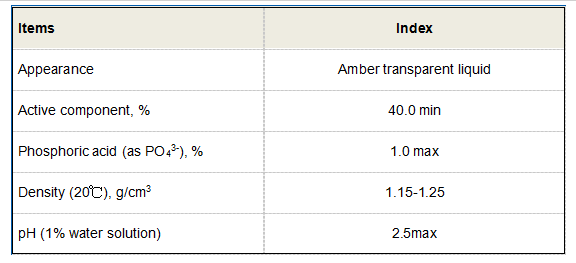anionic polyacrylamide flocculant
The Importance of Anionic Polyacrylamide Flocculant in Water Treatment
Anionic polyacrylamide flocculant, a water-soluble polymer, plays a crucial role in the field of water treatment and wastewater management. As an effective coagulant and flocculating agent, it is widely utilized in various industrial applications, ranging from municipal water treatment plants to mining and oil recovery operations.
The primary function of anionic polyacrylamide is to enhance the aggregation of suspended particles in a liquid medium. By introducing the flocculant to a suspension, the charged particles within the liquid are neutralized, facilitating the clumping together of smaller particles into larger aggregates, or flocs. This process significantly improves the clarity of water by allowing suspended solids and sediments to settle more easily, thus enhancing the efficiency of filtration systems.
One of the distinct advantages of anionic polyacrylamide flocculants is their ability to operate effectively at a wide range of pH levels and temperatures. This versatility makes them suitable for different applications in both acidic and alkaline environments. Moreover, their efficacy in flocculation can be attributed to their molecular weight and anionic charge density, which can be tailored to meet specific operational requirements. Such customization is essential for optimizing performance in various industrial processes.
In addition to water treatment, anionic polyacrylamide is instrumental in improving the efficiency of processes like sludge dewatering and sedimentation. In municipal wastewater treatment, for instance, the flocculant can help facilitate the removal of contaminants, leading to cleaner effluents and reduced environmental impact. By enhancing sludge dewatering, it also decreases the volume of sludge generated, resulting in lower disposal costs and environmental footprint.
anionic polyacrylamide flocculant

In the mining industry, anionic polyacrylamide is employed to assist in the separation of minerals and heavy metals from ores, contributing to more sustainable mining practices. The flocculant acts by binding fine particles and promoting their sedimentation, allowing for the efficient recovery of valuable minerals while minimizing waste.
Environmental concerns are increasingly at the forefront of industrial operations. Using anionic polyacrylamide as a flocculant proves to be an environmentally friendly choice, as it is biodegradable and can help reduce pollution in water bodies. The integration of this polymer in wastewater treatment processes supports compliance with environmental regulations and sustainability objectives.
However, it is essential for operators to use anionic polyacrylamide judiciously, considering factors such as dosage rates and specific application requirements. Overuse or improper application can lead to inefficiencies and potential negative environmental impacts. Therefore, ongoing research and development in formulation and application techniques remain vital to fully harness the benefits of this flocculant.
In summary, anionic polyacrylamide flocculant is an indispensable component in modern water treatment and industrial processes. Its ability to enhance flocculation, compatibility with varied operational conditions, and environmental benefits make it a preferred choice across various sectors. As industries continue to prioritize sustainability, the role of anionic polyacrylamide will only become more significant in achieving cleaner and more efficient water management solutions.
-
Understanding Polycarboxylic Acids: Properties, Applications, and Future PotentialNewsJul.28,2025
-
Scale Inhibitor Explained: How to Protect Your System from Limescale and Hard Water DamageNewsJul.28,2025
-
Scale and Corrosion Inhibitors: Essential Chemicals for Industrial Water System ProtectionNewsJul.28,2025
-
Polyaspartic Acid: A Biodegradable Polymer for Sustainable ChemistryNewsJul.28,2025
-
Isothiazolinones: A Versatile Antimicrobial Class with Industrial Power and Regulatory ChallengesNewsJul.28,2025
-
A Deep Dive into 2-Phosphonobutane-1,2,4-Tricarboxylic Acid (PBTC)NewsJul.28,2025





